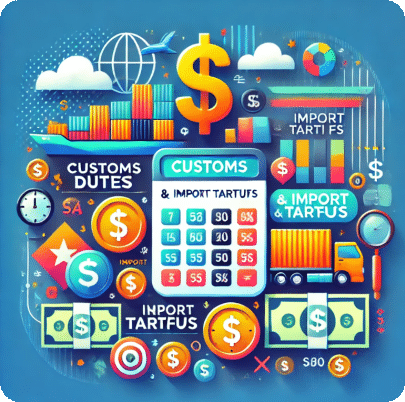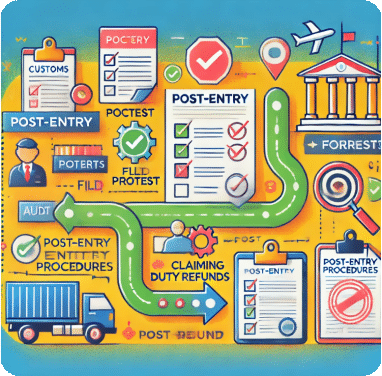When shipping goods from China to the USA, customs clearance plays a crucial role in ensuring a smooth and timely process. This guide will break down the key steps and considerations for customs clearance, offering detailed insights to help clients navigate this often complex procedure. By optimizing your approach, you can avoid delays and potential issues while meeting legal requirements, which is essential for better efficiency and cost management.

1. Documentation Requirements
Proper documentation is the foundation of smooth customs clearance. The U.S. Customs and Border Protection (CBP) agency has strict guidelines, and incomplete or inaccurate documentation can result in delays, fines, or even shipment refusal. Here are the key documents needed:
- Commercial Invoice: This should include full details of the exporter, importer, a clear description of the goods, their value, and the terms of the sale (Incoterms).
- Packing List: Details all items within the shipment, including their weight and volume.
- Bill of Lading (B/L) or Airway Bill: Proof of shipment, which may be ocean or air freight.
- Importer’s Security Filing (ISF): Also known as the 10+2, this is mandatory for ocean freight and must be filed at least 24 hours before the cargo leaves China.
- Certificate of Origin: This document verifies the country of manufacture, which might affect import duties and tariffs under certain trade agreements.
- Customs Bond: This is required for goods valued at over $2,500. It ensures that all import duties, taxes, and fees are paid.
2. Customs Duties and Import Tariffs
Understanding U.S. customs duties and tariffs is vital for cost estimation. The rate depends on the Harmonized Tariff Schedule (HTS) code of the product. The HTS code classification must be accurate, as errors can lead to penalties. It’s also important to be aware of Section 301 tariffs that may apply to goods from China due to the ongoing trade disputes.

Some tips for handling duties and tariffs:
- Use the right HTS code: Misclassification can lead to overpayment or penalties.
- Estimate the cost: Be prepared by calculating the total cost of importing, including duties, taxes, and tariffs.
- Duty drawback program: In certain cases, you can claim a refund of duties paid if goods are re-exported.
3. Inspection and Compliance
The U.S. customs authorities may inspect goods for various reasons, including verifying documentation, product safety standards, or ensuring compliance with intellectual property laws. It’s essential to make sure that the goods comply with all U.S. regulations before they are shipped. Some common regulations include:
- FDA (Food and Drug Administration) regulations: For food, drugs, cosmetics, and medical devices.
- FCC (Federal Communications Commission) compliance: For electronic goods.
- CPSC (Consumer Product Safety Commission): For items like toys, clothing, and other consumer goods.
Non-compliance with these regulations can result in shipment delays, fines, or confiscation.
4. Customs Broker Assistance
While not mandatory, hiring a customs broker can streamline the customs clearance process. A customs broker ensures that all documents are in order, tariffs are correctly calculated, and compliance is maintained. They can also assist with clearing your goods more quickly and handling any complications that may arise with customs.
At Tonlexing, we specialize in offering customs clearance solutions for goods shipped from China to the USA. We ensure that all documentation is prepared, duties are accurately calculated, and that you stay compliant with U.S. regulations.
5. Customs Bond
As mentioned earlier, a customs bond is required if the shipment value exceeds $2,500 or if it includes regulated goods. There are two types of customs bonds:
- Single Entry Bond: Covers one shipment into the USA.
- Continuous Bond: Ideal for frequent importers, this covers all shipments within a year.
The continuous bond is often a more cost-effective option for businesses regularly shipping goods from China to the USA.
6. Post-Entry Procedures
Once your shipment clears customs, it is important to handle post-entry procedures efficiently. If customs adjustments or issues arise, post-entry audits or corrections may be required. You can:

- File protests if you believe duties were wrongly assessed.
- Apply for refunds through the duty drawback program if applicable.
- Ensure correct payment and filing of import taxes.
Partnering with Experts for Seamless Customs Clearance
Navigating customs clearance from China to the USA requires detailed knowledge of regulations, accurate documentation, and compliance with tariff laws. A reliable logistics partner like Tonlexing can guide you through every step, ensuring a smooth shipping process. With expertise in customs clearance, we offer end-to-end solutions to help our clients avoid common pitfalls, expedite shipments, and minimize costs.
By following this comprehensive guide and leveraging the services of an experienced customs broker, you can avoid unnecessary delays and ensure your goods reach their U.S. destination efficiently.
For more information on our customs clearance services, contact Tonlexing today!


